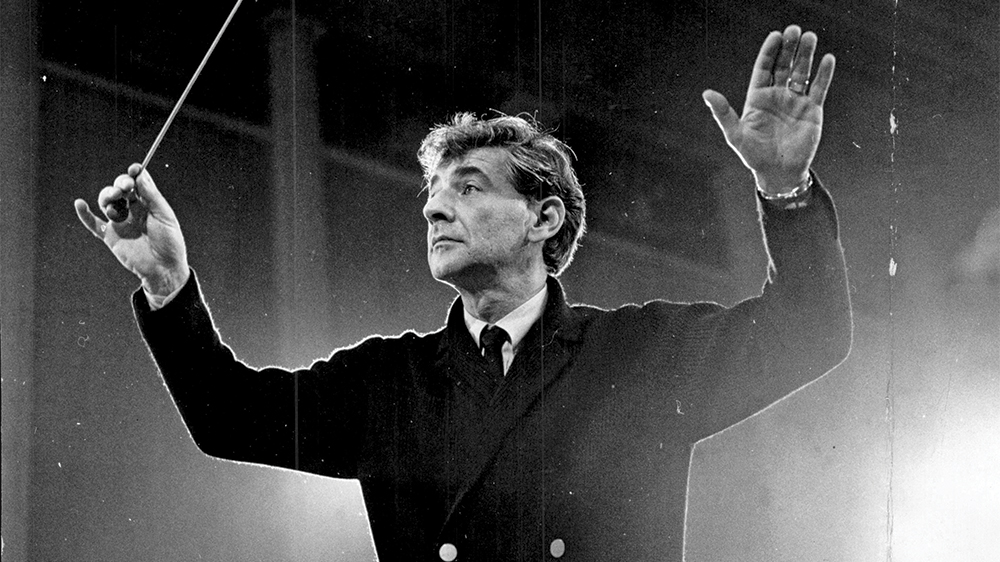‘West Side Story’ Was Defining Work for Legendary Composer Leonard Bernstein
By Tim Gray
LOS ANGELES (Variety.com) – Aug. 25 marks what would have been the 100th birthday of Leonard Bernstein, the subject of two competing films that will star Jake Gyllenhaal and Bradley Cooper. That shouldn’t be a problem: Bernstein had enough going on in his life to fill at least four movies plus a few miniseries.
Bernstein is best known as the composer of “West Side Story.” A month before its Broadway debut, the show played in Washington D.C. on Aug. 27, 1957, and Variety’s reviewer raved that the musical “has success stamped all over it. It has excitement, timeliness, sock choreography and a fine offbeat score.” While Broadway was always star-driven, the review noted that the show’s program featured four names printed considerably larger than the lead actors’: director-choreographer Jerome Robbins, composer Bernstein, lyricist Stephen Sondheim and book writer Arthur Laurents. The critic added, “That is the way it should be, for ‘’ has a talented cast of earnest young players. But its music, its dances and its lines are more important.”
Bernstein got his big break in 1943, as a last-minute substitute for the ailing Bruno Walter to conduct the New York Philharmonic for a radio broadcast. He was so successful that 16 years later, at age 40, he would become the youngest director of the orchestra.
Also in 1943, he composed the ballet “Fancy Free” for choreographer Robbins. The work was expanded into the musical “On the Town,” which became a hit Broadway show and later an MGM musical with Gene Kelly and Frank Sinatra — though MGM threw out half of the score by Bernstein, Betty Comden and Adolph Green, and added new songs.
In 1958, Bernstein became the first American-born conductor of the N.Y. Philharmonic. In the Eurocentric, tradition-bound world of classical music, it was a major breakthrough. He led the N.Y. Phil on several international tours and spotlighted the orchestra in a series of TV specials called “Young People’s Concerts,” which introduced kids to classical music starting in 1958.
He was known for his theatrical movements on the podium, including “jabs, contortions and leaps,” as the Associated Press described in his 1990 obit. In 1971, at his 1,000th performance with the N.Y. Phil, New York Times critic Harold Schonberg said, “Bernstein was a figure that no conductor in history has matched.”
Bernstein may be best known for “West Side Story,” but musical aficionados also love his “On the Town,” “Wonderful Town,” and “Candide,” among other musicals. He was Oscar-nominated for his score to 1954’s “On the Waterfront” and recorded hundreds of albums. Among his many awards were a 1969 Special Tony Award and a 1985 Grammy Lifetime Achievement Award.
He was also a social activist and philanthropist, working for such causes as nuclear disarmament and civil rights.
He married Felicia Montealegre in 1951 and the couple had three children.
Bernstein and Montealegre were immortalized in one of Tom Wolfe’s signature pieces, “Radical Chic,” in which the writer took a scathing look at the 1970 fund-raiser the couple threw in their Park Avenue apartment. Manhattan’s upper-crust mingled with the newish Black Panther Party, and in Wolfe’s piece neither group comes off well.
For years, Bernstein worked to create a place that could teach all aspects of music — the Academy for the Love of Learning. Eight years after his death in 1990, the Academy opened, in Santa Fe, N.M. It’s just one of his many legacies.

